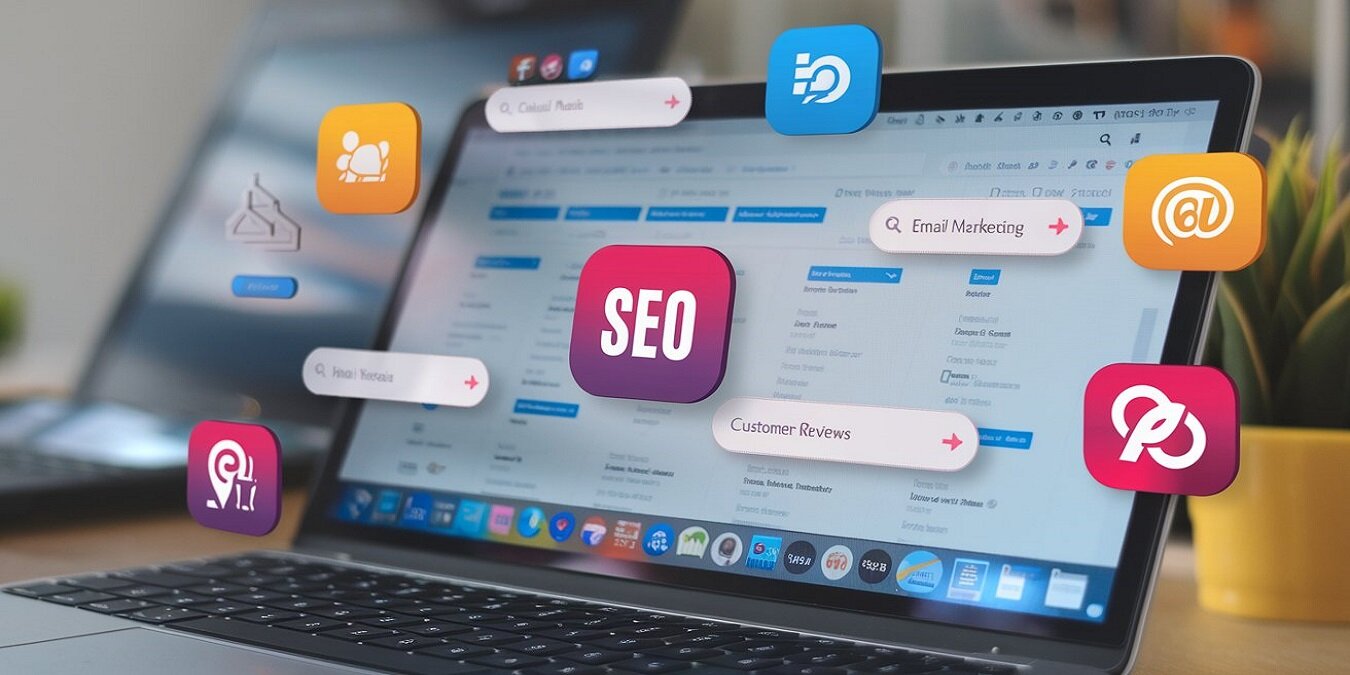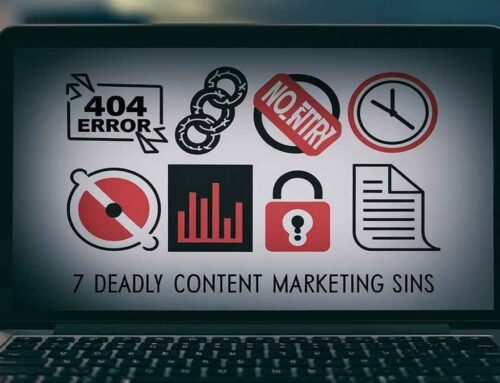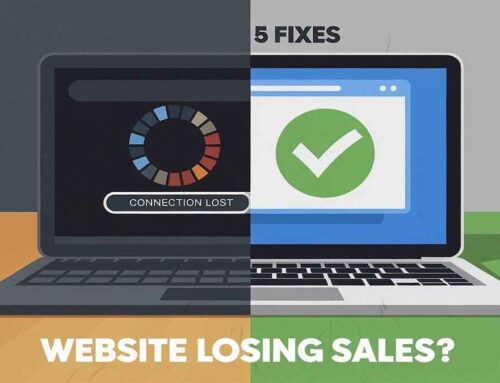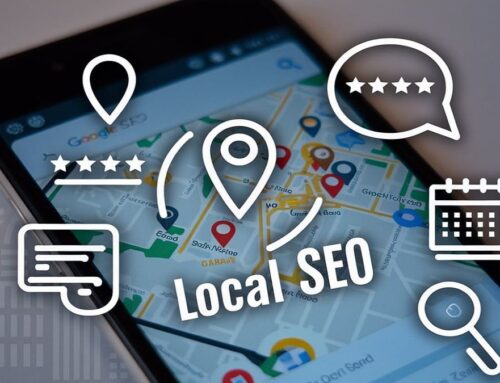
E-commerce and Digital Marketing
Imagine this: It’s late in the evening. You’re lounging in your favorite chair, scrolling through your phone and a pair of sneakers catches your eye. They’re perfect. Without even stepping foot in a store, you’ve added them to your cart, paid and now you’re just waiting for the delivery truck. Sounds familiar, right?
This scenario plays out countless times every day and it’s a testament to the transformative power of e-commerce. The way we shop has changed dramatically. From buying groceries to high-end gadgets, everything is available at the tap of a screen. For businesses, this shift presents a huge opportunity, but also a challenge. How do you stand out in a crowded, ever-evolving online marketplace?
If you’re a business owner or marketer looking to carve out your niche in the digital world, then you already know it’s not enough to simply have a website. Success in the online space requires a solid strategy. In this post, we’re going to dive into e-commerce and digital marketing strategies that will help you not just survive but thrive.
So, let’s start with a fundamental question: What makes an e-commerce business successful?
The Core of E-commerce Success: Understanding Your Audience
Before diving into tactics, there’s one thing you must nail: knowing your audience. It sounds simple, but many businesses fail here. Do you know who’s buying your products? What are their preferences, behaviors and pain points? If you don’t, the rest of your strategy could be misaligned.
To be successful, you need to answer these questions in detail:
- Who are my ideal customers?
- Where do they spend their time online?
- What problems are they trying to solve?
Once you have clear answers, you can tailor your marketing messages and product offerings accordingly. Without this deep understanding, your e-commerce efforts are akin to throwing darts in the dark. You might hit the target occasionally, but more often than not, you’ll miss.
Building a User-Friendly Website: Your Digital Storefront
Imagine walking into a brick-and-mortar store with dim lighting, cluttered aisles and no one to help you. Chances are, you’d leave almost immediately. Now think of your e-commerce website as your store. Is it clean, easy to navigate and does it provide a seamless shopping experience?
A well-designed website is non-negotiable for e-commerce success. This is your storefront and it must invite visitors to stay, browse and ultimately buy. Here’s what your website needs to accomplish:
- Fast load times: Studies show that if your website takes more than three seconds to load, 40% of visitors will abandon it. Speed is crucial.
- Mobile optimization: Over 50% of all web traffic comes from mobile devices. If your website isn’t optimized for mobile users, you’re losing potential customers.
- Intuitive navigation: Visitors should be able to find what they’re looking for with minimal clicks. Simplicity is key.
- Trust signals: Secure payment gateways, customer reviews and easy-to-find contact information build trust and reduce friction during the buying process.
If your website doesn’t check these boxes, it’s time for an overhaul.
But building a functional website is only the start. Let’s shift gears to what brings visitors to your website in the first place: digital marketing.
SEO: The Long Game You Can’t Ignore
You’ve probably heard it a million times: SEO is important. And while this advice might sound like a broken record, it’s repeated for a reason. Search engine optimization (SEO) is how you get found on Google, which is where the majority of online shopping journeys begin.
Good SEO ensures that when someone searches for a product like yours, your website appears in the results. So, how do you improve your SEO?
- Keyword research: Start by identifying the keywords and phrases your target audience is using. Tools like Google Keyword Planner or Ubersuggest can help.
- On-page optimization: Ensure your website’s content, meta descriptions, headers and images are optimized with the right keywords.
- High-quality content: Regularly publish relevant, informative content like blog posts, videos or product guides that cater to your audience’s needs.
- Backlinks: Getting reputable websites to link back to your site signals to search engines that your website is trustworthy and authoritative.
SEO is a long-term game, but it’s one worth playing. It might take time to see results, but when done right, it can drive organic (and free) traffic to your site for years.
But SEO isn’t the only way to drive traffic. Sometimes, you need to speed things up.
Paid Advertising: Speeding Up Success
SEO takes time, but paid ads? They deliver instant traffic. The beauty of platforms like Google Ads and social media advertising is the ability to reach your target audience immediately. However, running paid ads without a clear strategy can quickly turn into an expensive mistake.
Here’s how to approach paid advertising effectively:
- Start small and test: Don’t blow your entire budget on one campaign. Instead, run small, targeted tests to see what works.
- Define your audience clearly: The better you know your audience, the more effective your ads will be. Use detailed targeting options to ensure you’re reaching the right people.
- Leverage retargeting: Not everyone who visits your site will buy on the first visit. Use retargeting ads to follow up with people who have shown interest in your products.
Platforms like Facebook, Instagram and Google offer robust analytics to help you track and optimize your campaigns. Make sure you’re analyzing your ad performance and adjusting your strategy accordingly.
Now, while paid ads can deliver immediate traffic, not every visitor will convert. That’s where email marketing comes in.
Email Marketing: The Goldmine of Customer Engagement
Email marketing may seem old-fashioned compared to flashy social media or Google Ads, but don’t underestimate it. In fact, email marketing is one of the highest ROI channels for e-commerce businesses. Why? Because it allows you to nurture relationships with customers long after they’ve left your website.
The goal of email marketing is to keep your business top of mind and encourage repeat purchases. But it’s not about spamming people’s inboxes. It’s about providing value and building trust.
So how do you craft an effective email marketing strategy?
- Build your email list: Offer incentives like discounts, free resources or exclusive offers in exchange for a customer’s email address.
- Segment your audience: Not all customers are the same. Segment your email list based on customer behavior, preferences and purchase history. This way, you can send highly personalized messages.
- Create valuable content: Don’t just send promotional emails. Mix in content that educates, entertains or solves a problem for your customers.
- Use automation: Tools like MailChimp or Klaviyo allow you to set up automated email sequences, like cart abandonment reminders, welcome emails or post-purchase follow-ups.
When done right, email marketing becomes a powerful tool for boosting customer retention and increasing lifetime value.
But wait, what about social media?
Social Media: Building a Community Around Your Brand
Can you think of a brand you love? Chances are, they have an active presence on social media. But here’s the thing: Social media is more than just a platform to post product photos. It’s a space to build a community, foster engagement and cultivate loyalty.
Successful e-commerce businesses use social media to:
- Tell their brand story: Share the mission, values and behind-the-scenes moments that make your business unique. People connect with brands that feel human.
- Engage with followers: Ask questions, respond to comments and start conversations. This isn’t a one-way street. Social media is about creating dialogue.
- Leverage user-generated content: Encourage customers to share their experiences with your products. Not only does this build trust, but it also serves as free advertising.
- Run promotions and contests: People love a good deal. Give your followers a reason to share your brand with others through exclusive offers or fun contests.
Platforms like Instagram, Facebook and TikTok offer unique opportunities to connect with your audience in creative ways. But remember, consistency is key. Post regularly, engage authentically and keep refining your strategy based on what resonates with your audience.
Data and Analytics: The Secret to Continuous Improvement
At this point, you’ve set up your website, launched some paid ads, sent a few emails and posted on social media. Great! But how do you know what’s working? This is where data and analytics come into play.
One of the biggest advantages of digital marketing is that everything is measurable. You can track website traffic, conversion rates, ad performance, email open rates and much more. But the real power lies in using that data to optimize and improve.
Here’s what you should be tracking:
- Website analytics: Tools like Google Analytics can show you where your traffic is coming from, which pages are performing well and where visitors are dropping off.
- Conversion rates: It’s not enough to have traffic. How many visitors are converting into customers? Identify potential bottlenecks in your sales funnel.
- Customer behavior: Use heatmaps or session recording tools to see how customers are interacting with your site. This can reveal insights on improving user experience.
- Ad performance: Track metrics like click-through rates (CTR), cost per click (CPC) and return on ad spend (ROAS) to ensure you’re getting the most bang for your buck.
When you make data-driven decisions, you’re no longer guessing. You can adjust your strategies in real-time to ensure you’re maximizing your e-commerce success.
Personalization: Making Customers Feel Special
In today’s competitive market, consumers expect more than just a good product, they expect an experience that feels tailored to them. Personalization is no longer a nice-to-have; it’s a must-have for businesses looking to stand out.
Think about it: How many emails do you delete because they don’t feel relevant? How many websites do you leave because they don’t speak to your needs? Personalization solves these issues by delivering a more targeted, relevant experience to each customer. But how can you implement personalization effectively?
- Product recommendations: Leverage data to offer personalized product suggestions based on browsing history, past purchases or similar user behavior.
- Customized email campaigns: Use customer data to send targeted emails that address specific interests or behaviors. For example, if a customer abandoned their cart, send them a reminder email with a special offer.
- Tailored website experience: If a returning customer visits your site, greet them by name or show them products related to their previous purchases. Platforms like Shopify or WooCommerce have plugins that can help with this.
When you treat your customers like individuals, not just numbers, you build loyalty and create lasting relationships.
Customer Reviews and Testimonials: The Trust Factor
Have you ever hesitated to buy something online because you weren’t sure it would live up to the hype? That’s where customer reviews come in. Social proof plays a huge role in the online shopping experience. People trust other people, not just businesses.
Encourage your satisfied customers to leave reviews and share their experiences. Here’s how you can make the most of customer reviews:
- Showcase reviews prominently: Place reviews and testimonials front and center on your product pages. Seeing positive experiences from real customers can be the final push someone needs to hit the “buy” button.
- Incentivize reviews: Offer a small discount or free gift in exchange for a review. People are more likely to leave feedback if they have a reason to do so.
- Respond to negative reviews: Don’t ignore bad reviews. Address them publicly with a solution or apology. This shows potential customers that you care about their experience and are willing to make things right.
Reviews can build trust and credibility in a way that no ad or promotional email ever could.
Leveraging Influencer Marketing: Reaching a Wider Audience
Influencer marketing has exploded in recent years and for a good reason. People trust recommendations from those they admire and follow on social media. If you choose the right influencers to represent your brand, you can significantly boost your visibility and sales.
But influencer marketing isn’t just about partnering with the biggest names. Micro-influencers, those with smaller but highly engaged audiences, often deliver better results for niche brands. Here’s how you can make influencer marketing work for you:
- Choose the right influencers: It’s not about follower count; it’s about alignment. Does the influencer’s audience match your target demographic? Do they share your brand values?
- Set clear expectations: Be specific about what you want. Whether it’s an Instagram post, a YouTube video review or a TikTok feature, make sure you agree on deliverables upfront.
- Track results: Use unique discount codes or affiliate links to track how much traffic and sales are coming from each influencer. This will help you measure ROI and adjust your strategy.
Influencer marketing is powerful, but it works best when integrated into a broader digital marketing strategy.
Customer Service: The Silent Differentiator
In the fast-paced world of e-commerce, it’s easy to focus all your energy on getting new customers. But what about keeping them? Providing excellent customer service is an often-overlooked aspect of success in the online world. The truth is, it can be your secret weapon.
Here’s why: When something goes wrong, how you handle it can turn a dissatisfied customer into a loyal advocate or lose them forever. Customers remember how they were treated long after the issue is resolved.
So, what makes customer service great in an e-commerce setting?
- Be accessible: Offer multiple ways for customers to get in touch – whether through live chat, email or phone support. Customers appreciate quick and easy access to help.
- Respond quickly: Time is of the essence. If a customer has an issue, address it promptly. A speedy response can turn a potentially negative experience into a positive one.
- Go above and beyond: Sometimes, solving the problem isn’t enough. Surprise your customers with an unexpected discount, free shipping or a heartfelt apology. It shows you value their business.
Customer service isn’t just about solving problems; it’s about building relationships and trust that encourage repeat business.
Sustainability and Ethical Practices: Aligning with Modern Values
More than ever, consumers are conscious of where their products come from, how they’re made and the impact they have on the world. This shift toward sustainability and ethical consumption is particularly relevant in e-commerce, where transparency is key.
Are your products made from sustainable materials? Is your packaging eco-friendly? Do you support fair labor practices? These questions matter to today’s consumers.
By aligning your business with these values, you can:
- Attract like-minded customers: Shoppers are increasingly seeking out brands that reflect their values. If you’re transparent about your sustainability efforts, you’ll attract loyal customers who care about more than just price.
- Build trust through transparency: Share the story behind your products, your supply chain and the steps you’re taking to reduce your environmental footprint. Consumers appreciate honesty and effort, even if you’re not perfect.
- Create a unique selling point: Sustainability can be a powerful differentiator in a crowded market. Highlighting your eco-friendly practices sets you apart from competitors who might not prioritize these values.
Businesses that take responsibility for their impact on the world are not only doing good but also building long-lasting customer loyalty.
Conclusion: Putting It All Together
As you navigate the world of e-commerce and digital marketing, remember this: Success isn’t built overnight. It requires a combination of strategies, from SEO and paid advertising to email marketing and customer service. The key is to continuously learn, adapt and refine your approach based on data and customer feedback.
So, let me ask you: What’s the next step for your e-commerce business?
Is it improving your website’s user experience? Diving deeper into SEO? Or maybe stepping up your social media game? Whatever it is, start small, test and keep moving forward.
The online world is full of opportunities and the businesses that succeed are the ones that stay agile, listen to their customers and never stop evolving. With the right strategies in place, your e-commerce business can thrive and perhaps one day, when someone is lounging in their chair and scrolling through their phone, it’ll be your product they add to their cart.
Good luck and here’s to your success in the digital world!















Some truly nice and utilitarian information on this website, also I conceive the layout has got excellent features.